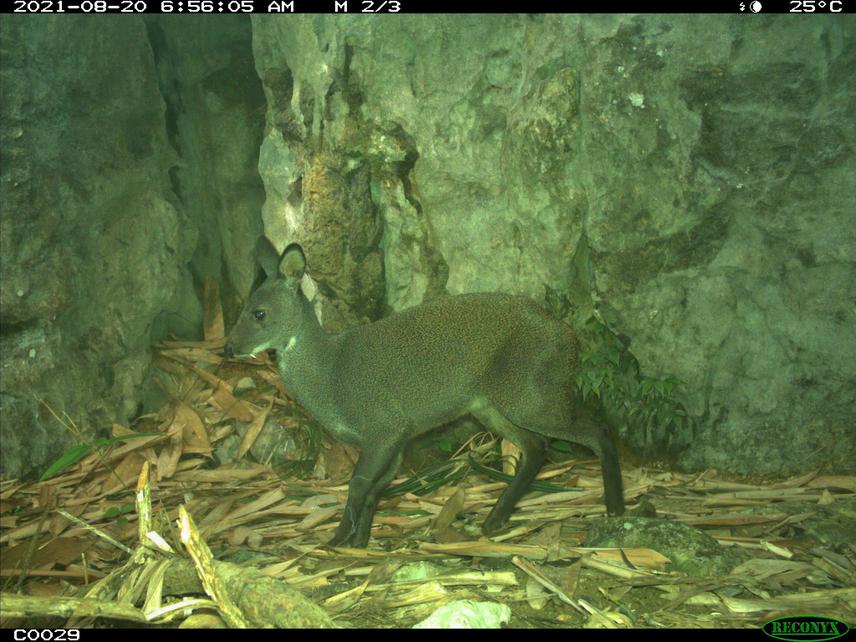Viet Dai Phan
Other projects
8 Dec 2023
Monitoring Behaviour Activities of Forest Musk Deer at Latrine Sites for Conservation Implementations
The forest musk deer (Moschus berezovskii) is a solitary ruminant in family Moschidae and is found in central and southern China and northeast Vietnam (Wang & Harris, 2017). In Vietnam, the distribution of forest musk deer is limited to the Lang Son, Cao Bang, and Thai Nguyen provinces (Dang et al., 2008). Forest musk deer has been assessed as Endangered on the IUCN Red List of Threatened Species (IUCN, 2021), and Critically Endangered on the Vietnam Red Data Book (MOST & VAST, 2007). The main drivers of the decrease in its populations are poaching for musk and ongoing habitat loss (Wang & Harris, 2017). Almost nothing is known about forest musk deer in Vietnam. The most recent information on the species is from the 1990s and estimated the population of 83 individuals in Huu Lien NR (Dang & Nguyen, 1999). However, this estimate was basically based on expert assessment, and not on robust data or survey methodologies. After several decades without any information on the species, our team detected an adult forest musk deer in Huu Lien NR by camera traps at the beginning of 2021 (Tran et al., in prep). The results prove inconclusively that forest musk deer still survives in Huu Lien NR.

This project aims to determine the population status, distribution, and threats to forest musk deer in Huu Lien and propose concrete recommendations for protecting the species. The latest study on musk deer in Vietnam was conducted more than two decades ago. This study will be the first to rigorously assess the population status, distribution, and threats to musk deer in Vietnam. The project will provide a solid foundation for the conservation activities to be implemented by reserve managers, policymakers, and local NGOs.
To archive this goal, we will concentrate on four specific objectives:
1. Assessing the population status of forest musk deer in the Huu Lien NR.
2. Assessing the distribution of forest musk deer in the Huu Lien NR.
3. Identifying the threats to the forest musk deer population and its habitat.
4. Providing appropriate recommendations for forest musk deer management and conservation in the study area.